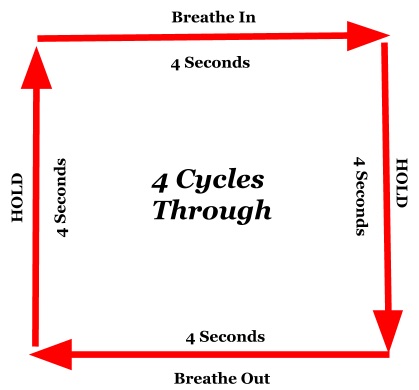
The state of samadhi is one of the most important aspects in yoga and meditation. The meditative state refers to a state where one-pointed focus is maintained. This state allows the person to remain conscious and lucid while maintaining a deep awareness in the present moment. It is different from other states of mind, which require different levels of refinement. People who desire to achieve samadhi must practice mindfulness.
Twelve consecutive breaths are required to keep the mind focused on one object in order to attain samadhi. While the mind might shift from one object or another during this period, it must remain focused on that object. Samadhi can only be reached when the mind is focused completely on one thing. It will appear as if one mind is connected to the particular object. This state will give you complete awareness about the object's essence.

Although the mind is in the body, it can also reach samadhi through various means. It may become completely absorbed in an object and feel its essence. In this state, the mind is free of all thoughts and emotions. It's almost as if the mind never left the object. The mind becomes so focused upon the object that it loses all other thoughts. It is a deeply spiritual experience.
Although samadhi is an extremely elevated state in awareness, it's not easy to achieve. Many people lack the spiritual ability to reach it. They simply cannot enter the state and are more likely to slip out. External sounds, such as e-mail or meetings, can send someone into an external orientation which is the opposite to samadhi. It takes great effort to get back to the elevated state.
Samadhi, a state of high concentration, is called Samadhi. According to the Yoga Sutras, the eighth limb is samadhi. Samadhi is a nondual state of consciousness which allows one to gain insight into their experience. The mind is in a state of samadhi, where it absorbs the world around it and does not separate.

Meditation achieves Samadhi which is a state where you are focused on one object. It is a condition of having a single-pointed focus on an object of interest. It is the final stage of yoga and the state of enlightenment. It is the final step in the path to true enlightenment. And it is a state of bliss and oneness. It is the perfect way to reach a higher level of consciousness.
Samadhi refers to the highest level of wholesome concentration. It is sometimes associated with the word samatha which, in Yoga Sutras, means unperturbed. This is not the only way to attain samadhi. You can actually experience samadhi many different ways. The most popular method is to keep your eyes on an object and focus on it for a longer time. This is the ideal method to attain samadhi.
FAQ
How does an anti-biotic work?
Antibiotics are drugs that destroy harmful bacteria. Antibiotics are used to treat bacterial infections. There are many different types of antibiotics. Some can be taken orally, others are injected and some are applied topically.
Many people who have been exposed can be prescribed antibiotics. One example is if someone has had chickenpox and wants to prevent shingles. For those with strep-thorphritis, an injection of penicillin could be administered to prevent them from getting pneumonia.
A doctor should give antibiotics to children. Children are at greater risk than adults for developing serious side effects from taking antibiotics.
Diarrhea is the most common side effect from antibiotics. Other possible side effects include stomach cramps, nausea, vomiting, allergic reactions, headaches, dizziness, and rashes. These symptoms generally disappear once the treatment has finished.
How do I know what's good for me?
You have to listen to what your body says. Your body knows what you need when it comes time to eat, exercise, and get enough rest. To avoid overdoing it, it's important that you pay attention to what your body is telling you. Pay attention to your body, and ensure that you are doing all you can to keep yourself healthy.
What is the difference in a virus and bacteria?
A virus is a microscopic organism that cannot reproduce outside its host cell. A bacterium (or single-celled organism) reproduces by splitting itself into two. Viruses are small, around 20 nanometers in size. Bacteria are much larger, at 1 micron.
Viruses are spread via contact with infected bodily liquids such as urine, saliva, semen and vaginal secretions. Bacteria can be spread by direct contact with infected objects and surfaces.
Viruses can enter our bodies through cuts, scrapes, bites, or other breaks in the skin. They can also enter the body through the mouth, nose, eyes and ears, vaginal, rectum or anus.
Bacteria can enter our bodies through wounds, cuts, scrapes, burns, insect stings, or other breaks in our skin. They may also be introduced into our bodies through food and water as well as soil, dirt, dust, and animals.
Both viruses and bacteria can cause illness. Viruses cannot multiply in their host cells. Viral infections can only cause diseases in living cells.
Bacteria may spread to other people and cause sickness. They can invade other areas of the body. We need antibiotics to get rid of them.
What is the best diet for me?
Your age, gender, body type, and lifestyle choices will all impact the best diet. You should also consider how much energy your exercise consumes, whether you like low-calorie or high-calorie foods, and what you enjoy in terms of eating fruits and veggies.
Intermittent fasting may be a good choice if you want to lose weight. Intermittent Fasting means that you eat only specific meals throughout your day and not three large meals. This method may work better than traditional diets which include daily calorie counts.
Some studies suggest that intermittent fasting may improve insulin sensitivity and reduce inflammation, which can lead to improved blood sugar levels and reduced risk of diabetes. Research suggests that intermittent fasting can promote fat loss and improve overall body composition.
Does being cold give you a weak immune system?
Being cold gives you a weaker immune system because when you are cold, your body produces less white blood cells which fight infections. Cold can also make you feel better as your body releases endorphins to your brain, which reduce pain.
What can you do for your immune system to improve?
The human body consists of trillions of cells. These cells work together to form organs and tissues that perform specific functions. One cell is replaced by another when it dies. Chemical signals, called hormones, allow cells to communicate with each other. Hormones control all bodily functions, including growth, development, metabolism, immunity and immune system.
Hormones, chemicals that are secreted throughout the body by glands, are chemicals. They travel through bloodstreams and act as messengers that control the function of our bodies. Some hormones come from the body and others from outside.
The hormone-producing glands release their contents into bloodstream. This is when hormone production starts. Once hormones become active, they move throughout the body until reaching their target organ. Sometimes hormones stay active for only a short time. Others hormones remain active longer and still have an influence on the body's functioning long after they leave bloodstream.
Some hormones are produced in large quantities. Others are produced in smaller amounts.
Some hormones are only produced at certain times in your life. For example, estrogen can be produced during puberty or pregnancy. Estrogen aids women in developing breasts, maintaining bone density and preventing osteoporosis. It helps to stimulate hair growth and maintains skin's softness.
How to measure body weight?
A Body Fat Analyzer is the best way to measure body weight. These devices measure the body fat percentage in people who wish to lose weight.
Statistics
- nutrients.[17]X Research sourceWhole grains to try include: 100% whole wheat pasta and bread, brown rice, whole grain oats, farro, millet, quinoa, and barley. (wikihow.com)
- WHO recommends reducing saturated fats to less than 10% of total energy intake; reducing trans-fats to less than 1% of total energy intake; and replacing both saturated fats and trans-fats to unsaturated fats. (who.int)
- WHO recommends consuming less than 5% of total energy intake for additional health benefits. (who.int)
- In both adults and children, the intake of free sugars should be reduced to less than 10% of total energy intake. (who.int)
External Links
How To
What does the meaning of "vitamin?"
Vitamins are organic compounds naturally found in food. Vitamins are necessary for us to absorb nutrients in the foods we consume. Vitamins cannot come from the body so food must provide them.
There are two types: water-soluble and fat-soluble vitamins. Water-soluble vitamins dissolve quickly in water. Vitamin C,B1(thiamine), B2 (2riboflavin), and B3 (3niacin), as well as vitamin C,B1, B2 (riboflavin), and B3 (niacin), vitamin B6 (pyridoxine), vitamin folic acid (biotin), pantothenic, and choline are examples. The liver and fat soluble vitamins are stored within the liver and in fatty tissue. You can find vitamin D, E K, A, beta carotene, and other fat-soluble vitamins.
Vitamins are classified based on their biological activity. There are eight major categories of vitamins.
-
A - Vital for normal growth and maintaining good health.
-
C - vital for proper nerve function, and energy production.
-
D - essential for healthy bones, teeth, and gums.
-
E - needed for good vision and reproduction.
-
K - required for healthy muscles and nerves.
-
P – vital for building strong bones.
-
Q – aids digestion of iron and iron absorption
-
R - necessary for making red blood cells.
The recommended daily intake (RDA), of vitamins varies with age, gender and physical condition. The U.S. Food and Drug Administration (FDA) sets the RDA values.
For adults over 19 years, the RDA is 400 mg per day for vitamin A. Because it is essential for the development of the fetus, pregnant women should consume 600 micrograms per daily. Children ages 1-8 require 900 micrograms per day. Infants below one year old require 700mg per day. But, between 9 months to 12 months, the amount drops to 500mg per day.
Children aged 1-18 years need 800 micrograms daily, while children overweight require 1000 micrograms per days. Children who are severely obese or underweight will need 1200 micrograms each day.
Children 4-8 years old who have anemia must consume 2200 micrograms of Vitamin C daily.
Adults over 50 years of age need 2000 micrograms per day for general health. Breastfeeding or pregnant women require 3000 micrograms per daily due to higher nutrient demands.
1500 micrograms are required daily by adults over 70 because they lose approximately 10% of their muscle each decade.
Women who have been pregnant or are lactating require more than the RDA. Pregnant and breastfeeding women require 4000 micrograms each day during pregnancy and 2500 Micrograms each day after delivery. Breastfeeding mothers need to consume 5000 micrograms every day when breastmilk has been produced.